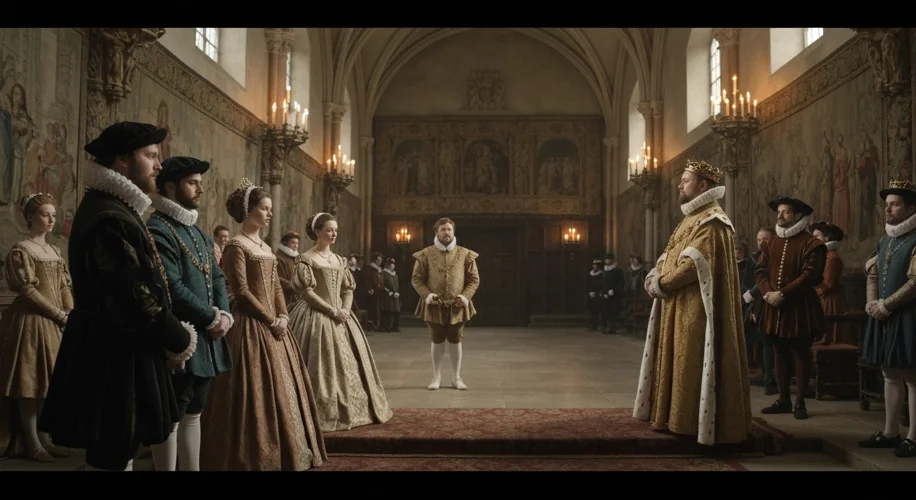The Tudor court was a viper’s nest of ambition, intrigue, and the ever-present shadow of succession. King Henry VIII, a monarch known for his insatiable desires and ruthless pursuit of a male heir, cast a long and complex net over his family. Among the most startling, and perhaps most sensational, of the whispers that circulated through the gilded halls of power concerned a potential marriage between his illegitimate son, Henry FitzRoy, and his legitimate daughter, Mary.
A Son of Shame, A Daughter of Destiny
Henry FitzRoy, Duke of Richmond and Somerset, was the product of Henry VIII’s brief affair with Elizabeth Blount. Born in 1519, he was openly acknowledged by the King and showered with titles and favor, a testament to Henry’s desperate yearning for a son. FitzRoy was a handsome and promising youth, educated and imbued with the martial skills befitting a prince. He was, in many ways, the son Henry wished he could place on the throne, had circumstances and legitimacy allowed.
On the other side stood Princess Mary, Henry VIII’s only surviving child from his first marriage to Catherine of Aragon. Born in 1516, Mary was a devout and intelligent princess, raised with the expectation of a significant royal marriage and the potential to one day rule. She was the living embodiment of her mother’s legitimacy, a crucial factor in the Tudor line of succession.
The Marriage Market of the 16th Century
Royal marriages in the 16th century were far more than unions of love; they were strategic alliances, tools of diplomacy, and instruments to secure dynastic power. Kings and queens played a constant game of chess, using their children as pawns to forge advantageous relationships with other European powers. The question of who would marry Mary, and who FitzRoy might eventually wed, was of paramount importance to Henry VIII.
But what if the King’s gaze turned inward? What if, in his relentless pursuit of a secure dynasty, he considered a union that was not only politically unconventional but also deeply taboo?
The Whispers Begin: A Question of Succession?
The notion of Henry VIII contemplating a marriage between his recognized illegitimate son and his legitimate daughter is a notion that has long fascinated and disturbed historians. The primary source for this audacious claim comes from the writings of Eustace Chapuys, the Imperial Ambassador of Charles V, Holy Roman Emperor. Chapuys, a keen observer of the English court and often critical of Henry, recorded several instances where such a marriage was discussed, or at least considered, by the King.
In a dispatch from 1533, Chapuys noted Henry’s frustration with his inability to produce a legitimate male heir. He wrote that the King had “for a long time entertained the idea of marrying his natural son, the Duke of Richmond, to his natural daughter, the Lady Mary.”

Why Such a Scandalous Proposal?
Several factors might have driven such a thought, however abhorrent it seems to modern sensibilities. Firstly, Henry’s obsession with securing the Tudor succession was all-consuming. With Anne Boleyn giving him daughters and his legitimate line thinning, the idea of consolidating power within his own bloodline, even through an illegitimate branch, might have seemed like a desperate solution.
Secondly, FitzRoy was a highly favored son. Henry VIII clearly saw potential in him, and marrying him to Mary would have, in a twisted way, legitimized FitzRoy’s claim and potentially united his two branches of heirs. It would have kept the royal blood within the family, a common concern for monarchs.
Furthermore, the political climate was volatile. England was navigating treacherous waters with the Papacy and the Holy Roman Empire, particularly after Henry’s divorce from Catherine of Aragon and his marriage to Anne Boleyn. A marriage between Mary and FitzRoy could have been seen as a domestic solution, reducing reliance on foreign alliances and strengthening the King’s hand within England.
The Reality: A Rumor or a Real Consideration?
Historians remain divided on the veracity of these claims. Chapuys was often biased against Henry and may have exaggerated or misinterpreted conversations. His reports were designed to keep Charles V informed and sometimes served to bolster the Emperor’s own political positions by highlighting Henry’s perceived weaknesses or immoral actions.
However, the repeated mention of such a possibility by Chapuys suggests that the idea, at the very least, was present in the court’s consciousness, or perhaps even broached by Henry himself in moments of frustration or as a hypothetical.
There is no concrete evidence that Henry VIII ever formally proposed this marriage or that it progressed beyond speculative discussions. The immense religious and legal barriers to such a union in the 16th century, which condemned incestuous relationships, would have made it an almost impossible hurdle to overcome, even for a king as powerful as Henry VIII.
FitzRoy’s Tragic End
Adding a layer of poignancy to this debate is the untimely death of Henry FitzRoy in 1536, at the age of 17. He died of consumption, leaving Henry VIII without his most favored illegitimate son. His death removed any practical possibility of such a marriage, and perhaps, for many, it was a divine intervention that prevented a deeply unsettling union from ever occurring.
Conclusion: The Enduring Shadow
The tale of Henry FitzRoy and the potential marriage to Mary remains in the realm of historical conjecture. While the notion is titillating and speaks volumes about the desperate measures and moral flexibility of the Tudor court, it likely remained a dark fantasy or a whispered possibility rather than a concrete plan. Yet, it serves as a powerful reminder of the immense pressures surrounding royal succession and the often-unseen currents of ambition and desire that flowed beneath the polished surface of royal life.

